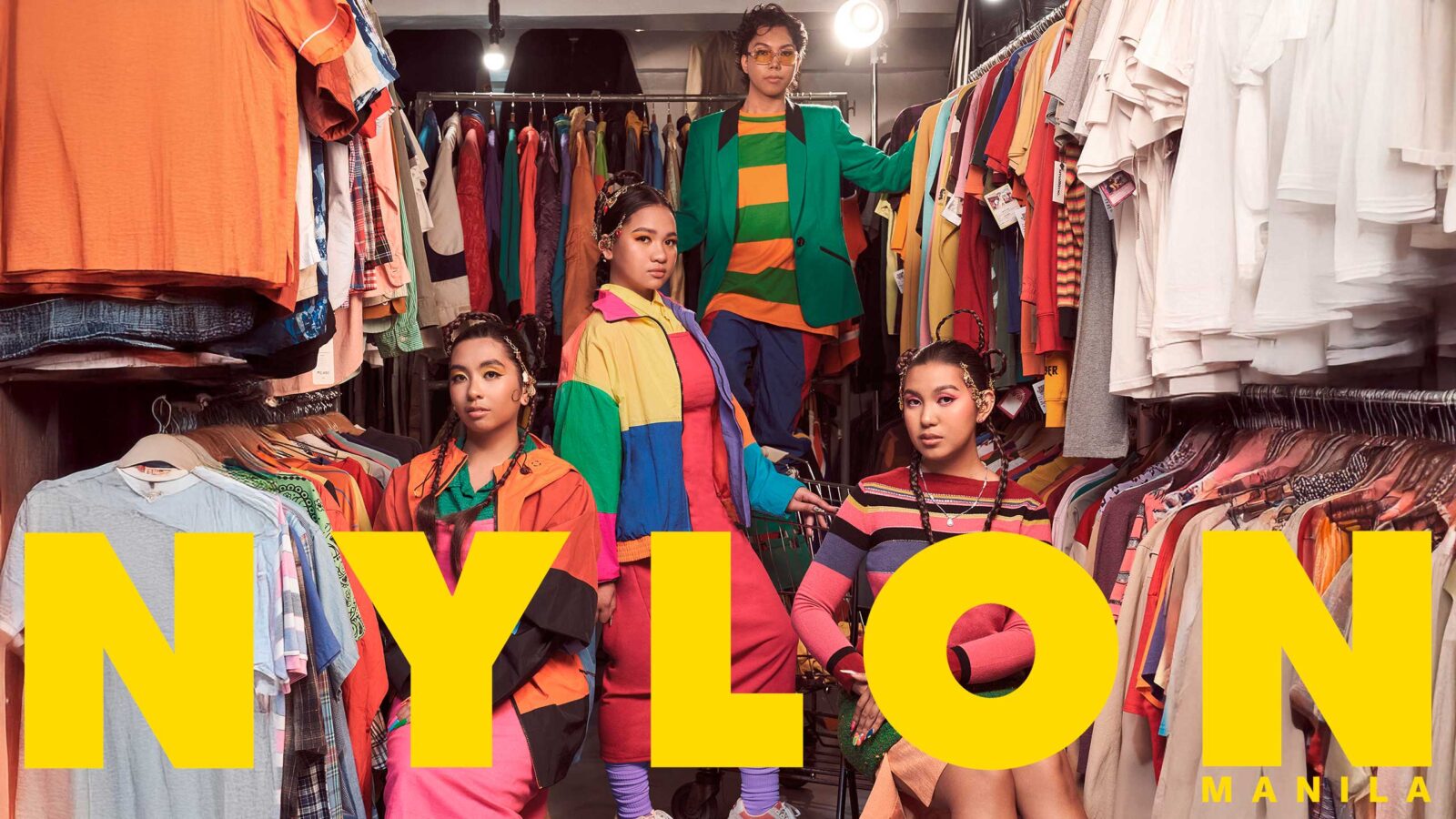With thrifting, ukay-ukay, vintage and secondhand shopping, Gen Z is fashioning a way of life where their clothing choices speak for more than just their style.
Related: 5 Truths That No One Tells You About Thrift Shopping
What are the kids wearing these days? You direct this question towards students and Filipino youth, and chances are you’ll get more than a few answers related to ukay-ukay or thrifting. The kids—they crave the green hangers of city ukay-ukays. Beyond perceiving style as a personal act of self-expression, this generation is consciously taking part in collective action in an effort to do better for the world and the people in it.
Youth alliance for climate justice Youth Advocates For Climate Action Philippines (YACAP) knows a thing or two about how fashion can speak for more than just personal style. What we wear says plenty about us, and it’s not just “I like rock music” or “I love embracing my femininity.” Fashion can speak to what we’re fighting for.
YACAP is a nationwide alliance of Filipino youth organizations, student councils, and individuals fighting against climate change and injustice. The Philippine counterpart of youth-led global climate movement Fridays For Future, brought into global spotlight by Greta Thunberg and her fellow activists, the alliance organizes and participates in various initiatives in pursuit of climate justice.
One of their flagship projects, the now-annual Fashion Against Fascism and Fossil Fuels, marries the idea of fashion being an avenue to highlight important issues and remedy ignorance in a hybrid event that’s equal parts fashion show and protest. It uses fashion, art, and performance to relay messages calling for systemic and societal change.
As part of Generation Now, members of YACAP recognize their impact as consumers, individuals, parts of a collective, and patrons of sustainable practices. Fast fashion is becoming an increasingly huge problem for the environment, but thankfully, calls for sustainability in all aspects are also increasing in volume.
Surrounded by the colors and artwork of vintage store Season Pass in Maginhawa, Quezon City, we sit down with YACAP members and Gen Z environmental and climate advocates Mela Llamado, Fiona Fuentes, JC Cabangon, and Alab Mirasol Ayroso as they talk all things secondhand and sustainability.

On Mela: Button-down shirt and jacket by @giveme_theloot, Dress by @beyondcollective__, Earrings by @preciouscharms.co, Hair Accessories by @jewelnation.ph, Heels by @thelittle_vintageshop. On Fiona: Button-down shirt and dress by @thelittle_vintageshop, Earrings by @preciouscharms.co, Jacket and shoes by @seasonpassph (@groupactivity.ww, @thevintagejunkiemnl, @vistmnl, @smalltimeph__), Hair Accessories by @jewelnation.ph. On JC: Shirt, jogger pants, and shoes by @seasonpassph, Jacket by @thelittle_vintageshop. On Alab: Sweater, underskirt, and heels by @thelittle_vintageshop, Skirt by @seasonpassph, Hair Accessories by @jewelnation.ph, Earrings by @preciouscharms.co.
THE ALLURE OF UKAY-UKAY
Ukay-ukay and thrifting has long been part of Filipino culture. From the night markets of Baguio, where it originated, to the hole-in-the-wall stores in Metro Manila, secondhand fashion is thriving in an era of complex and connected socio-economic concepts: rising costs, rising awareness of environmental impact, social media trends, and more.
To note, ukay-ukay in the sense that sellers sell imported secondhand clothing is actually illegal in the Philippines. That doesn’t stop the proliferation of such business nationwide, though. However, reselling items sourced locally is fine for the most part.
“With Gen Z, we can see the rise of climate awareness, environmental awareness,” University of the Philippines Diliman Political Science freshman Fiona muses. “With the rising prices of clothes, we can see how people are making ‘ukay’ trend more.” There’s no denying the uptick of patrons and advocates of thrifting, with their own reasons for riding the trend, what with social media doing what it does best—propagating influential narratives and practices, for better or worse.

Top and skirt by @kael.street, Earrings by @preciouscharms.co, Hair accessories by @jewelnation.ph.
Besides being an avenue to shop clothing for cheap and find unique pieces to reflect one’s personal style, shopping secondhand has become part of a greater call to be mindful of our environmental and social impact as a society of consumers.
“Trends come with the material conditions,” Mela, YACAP member and former chairperson of Agham Youth UP Manila, says. “Nakikita talaga ng mga tao na nasisira talaga yung environment, na sobrang daming waste [generated] from overproduction of clothes. In a way, the way we choose to ukay rather than go for fast fashion—it’s a statement of our choice to advocate for sustainability.”
Shopping good quality vintage pieces is also a common preference for many sustainability-minded individuals. If you have pieces that you love, and that will last you a long time, then you won’t need to buy more, for the most part. Having a mindset that resists consumerist rhetoric is necessary if we want to advocate for better practices across the board—and that also requires recognizing our bad habits, like buying clothing we don’t need from online shopping platforms.
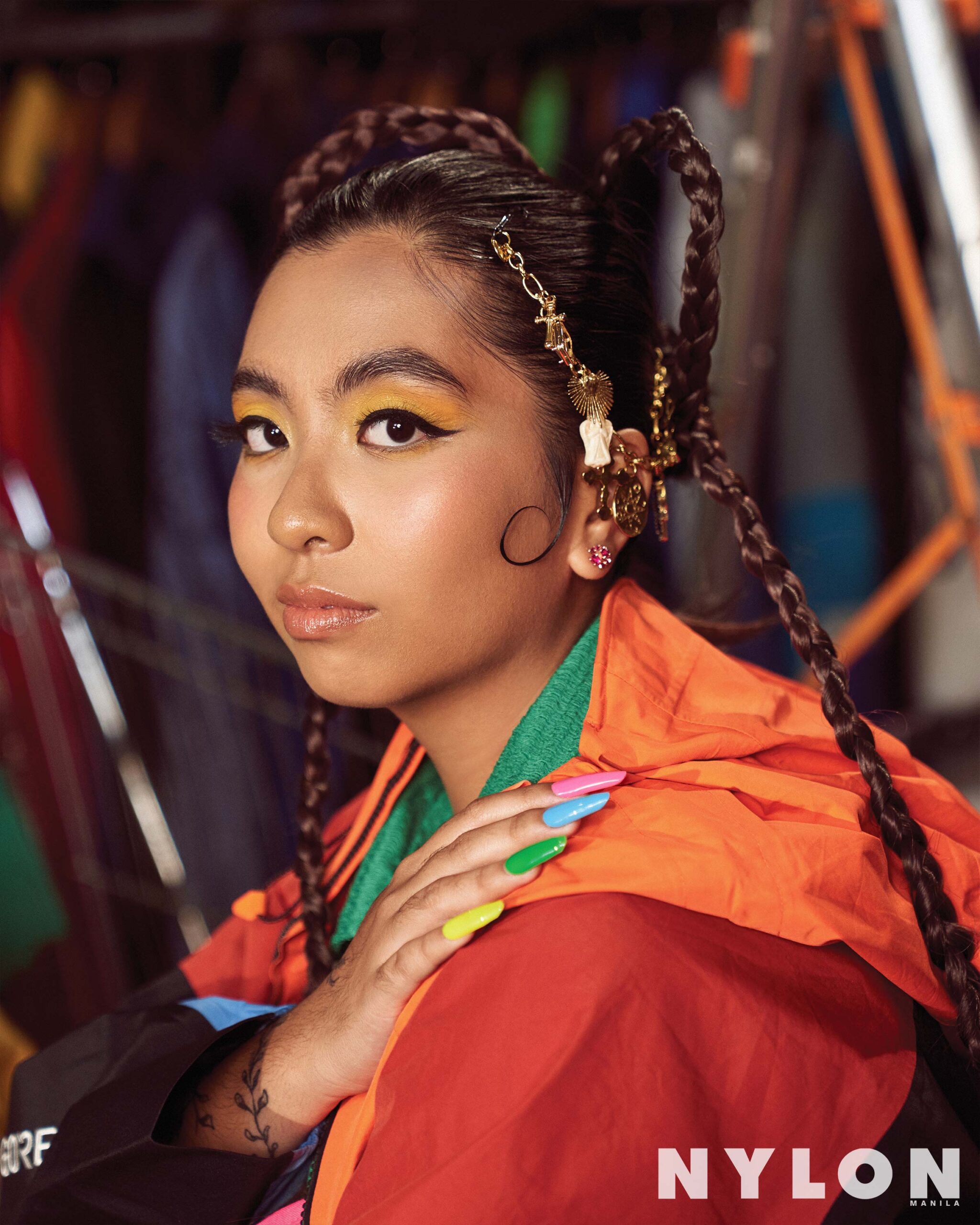
Shirt by @giveme_theloot, Dress by @nirvanacollective.co, Earrings by @preciouscharms.co, Hair accessories by @jewelnation.ph, Heels by @thelittle_vintageshop.
“Trying to find other sources of clothing,” Mela says of addressing personal bad habits like shopping fast fashion. “Like secondhand items.”
SECONDHAND, SECOND LIFE
On one hand, while shopping secondhand and vintage have become a way to look good in a more affordable and sustainable way, and to give already-existing pieces a second life so they don’t go to waste, there also exists another issue that arises from the trendiness of vintage style. Ever heard of the problem with Depop sellers (in our case, it’s local Instagram resellers)?
They buy items from thrift shops, post them online to incite jealousy and desire, and then resell them for higher prices—sometimes obscenely high—under the guise of them having done the hard work of scouring shops for good items and good deals. (“It’s vintage!”)
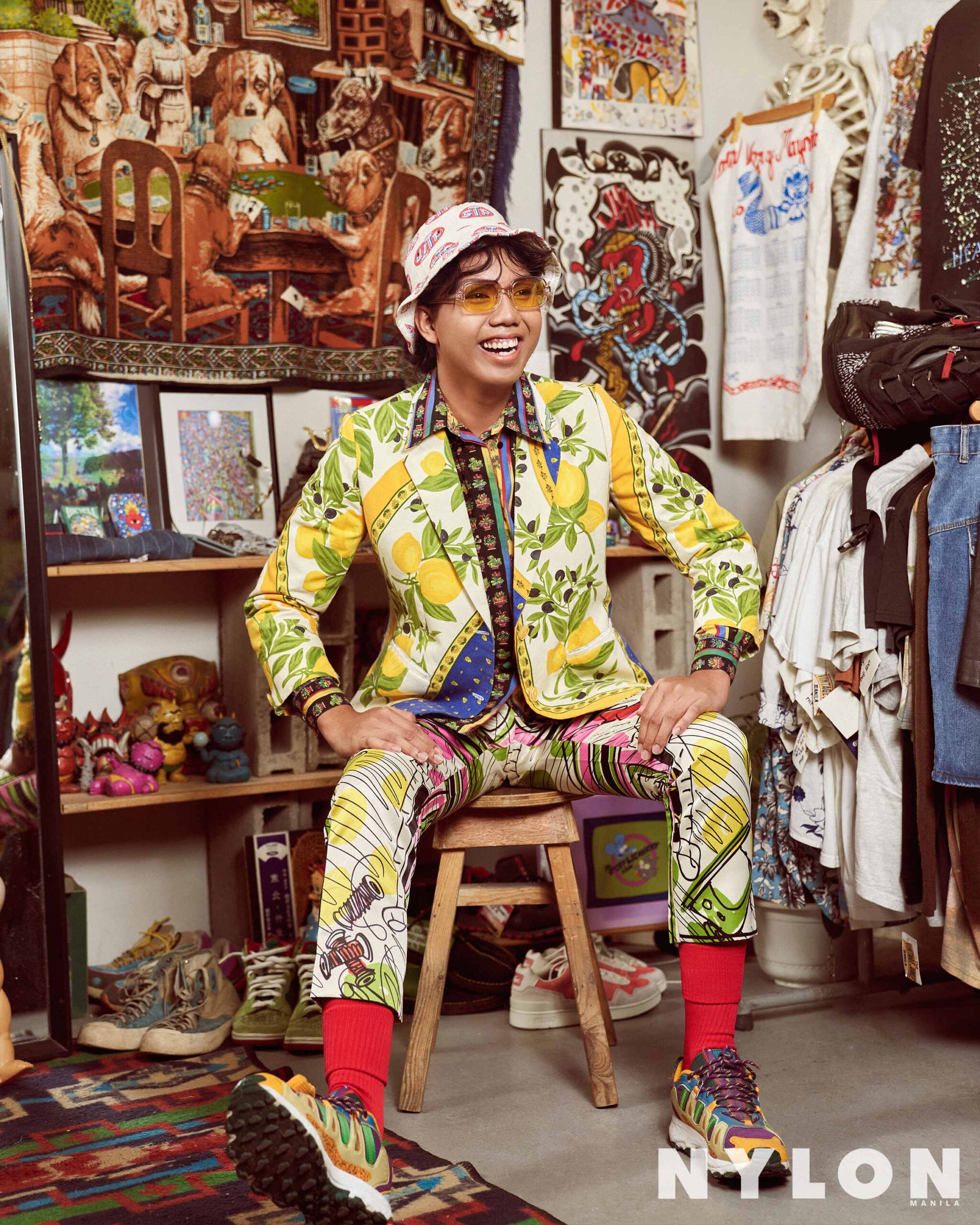
Button-down shirt by @giveme_theloot, Jacket by @kael.street, Pants, hat and shoes by @seasonpassph (@groupactivity.ww, @thevintagejunkiemnl, @vistmnl, @smalltimeph__), Earrings by @preciouscharms.co.
“So there’s also that problem of [people] taking advantage of the influence of consumerism, making profit off of it,” Fiona says. “We then see how people with more money, power, and influence profit off other people on a smaller scale.”
Social media has amplified, well, everything, and even though good does come out of trends every once in a while, fashion trends often have one goal: for you to buy, buy, buy.
For instance, while shopping secondhand is trendy, so is following microtrends and buying from fast fashion stores. Shein has never been more popular than as of late, and that’s because people want to look good like the people they see on their feeds at low cost and low effort. “[Some people] really make a consumerist lifestyle seem good and trendy,” Fiona adds.
“We have to identify where ‘trends’ are coming from,” Alab, organizer, spokesperson, and former national coordinator of YACAP, discusses. “Obviously, it’s still big companies, people with machinery and influence, who can set those trends. Their goal is to make you buy and to make money.”
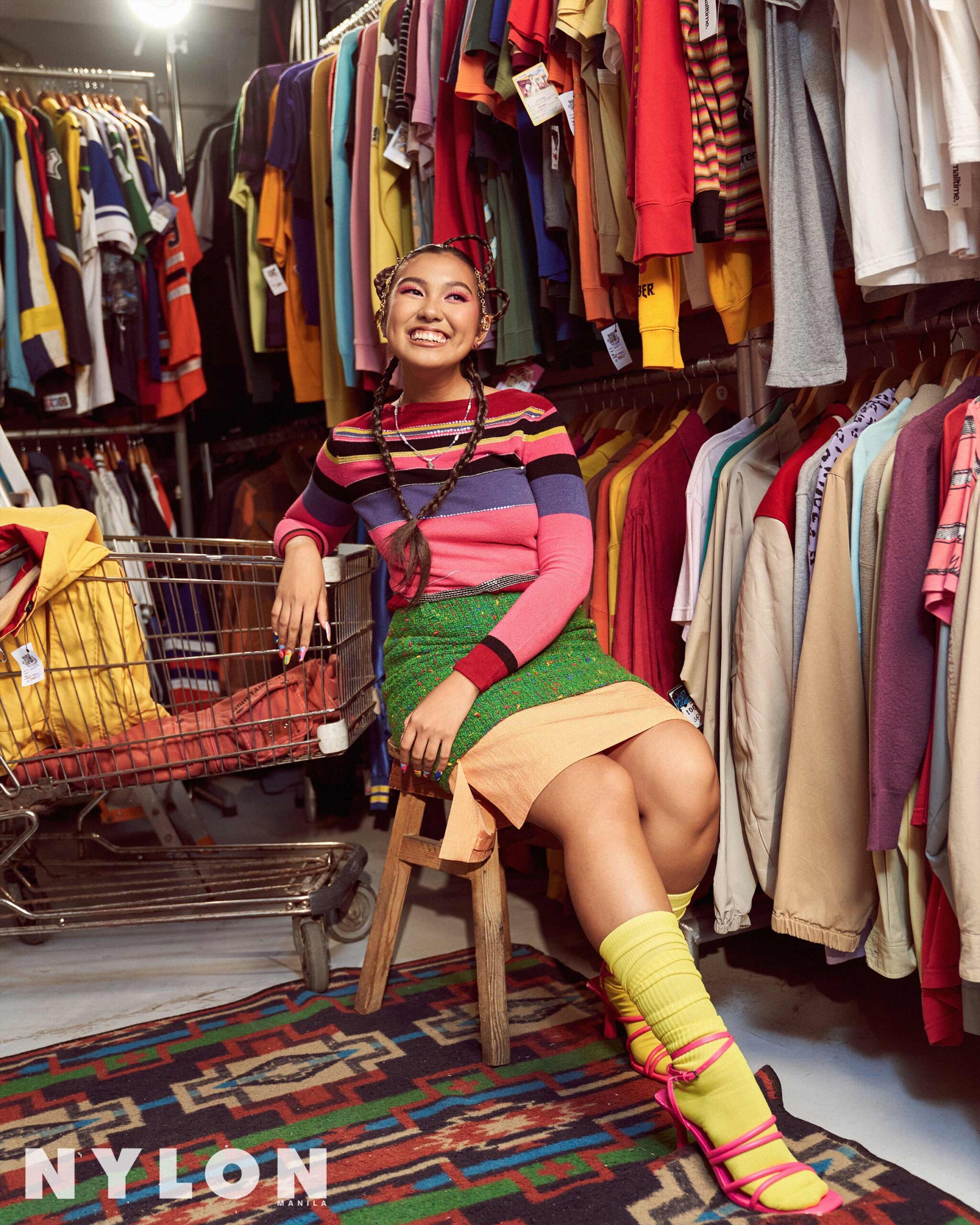
Many will say that to live your most sustainable life, you have to stop buying. You don’t need a new outfit every time you have an event—you don’t need variants of the same item just because you want to look exactly like your Pinterest outfit pegs. Much truth lies in this sentiment, but it’s a longshot to assume we can get everyone to ascribe to it.
Efforts of sustainability then fall under the category of making more conscious, mindful choices when it comes to fashion, like not patronizing huge fast-fashion companies and doing research into how a product is made. Was it made in a sustainable way?
And for that matter, while we’ve been throwing it around all willy-nilly, let’s really get into what sustainability is.
THE TRUTHS OF SUSTAINABILITY
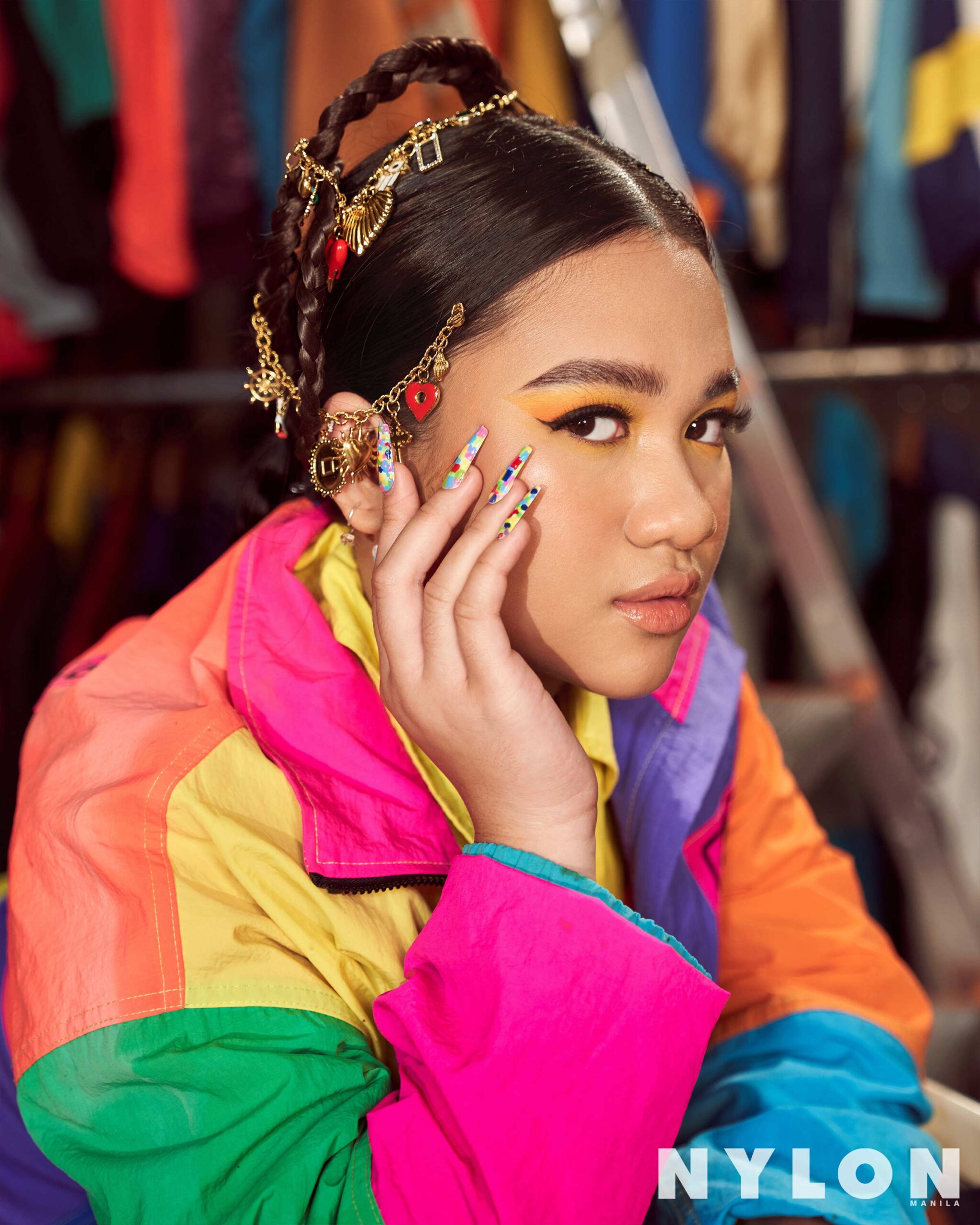
Though sustainability is such a buzzword these days, getting into what it actually means requires a bit of perspective. JC, Sociology sophomore at the Polytechnic University of the Philippines says, “Ang vague niyang term—it means something different for different people.” To farmers, it could mean land and environment, as in sustainable farming. To workers, it could mean fair wages and proper working conditions. To some people, it could mean a lifestyle founded on underconsumption and a desire to reduce their ecological footprint.
“Sustainability in the Philippine context, hindi siya nakakulong sa hindi lang paggamit ng mga bagay,” JC continues. “But more also sa pag-ugat sa kung saan kinukuha yung mga materials and paano siya ginagamit.”
In terms of clothing, sustainability in its essence refers to the entire process in which an item is made and the material conditions it was made under. Just because a top is made with, for instance, upcycled materials does not mean it’s sustainable, particularly not when it’s overproduced or if the people who made it are not compensated fairly or are working under dangerous conditions.
Advocating for sustainability in fashion goes beyond the fibers and materials clothing pieces are made from, Alab details. You also take into consideration who is handling these materials and their material conditions. “From the materials, we go to the factories—how are workers treated when they are the ones creating what we wear? Walang hibla ng damit na hindi dumadaan sa kamay ng manggagawa.”
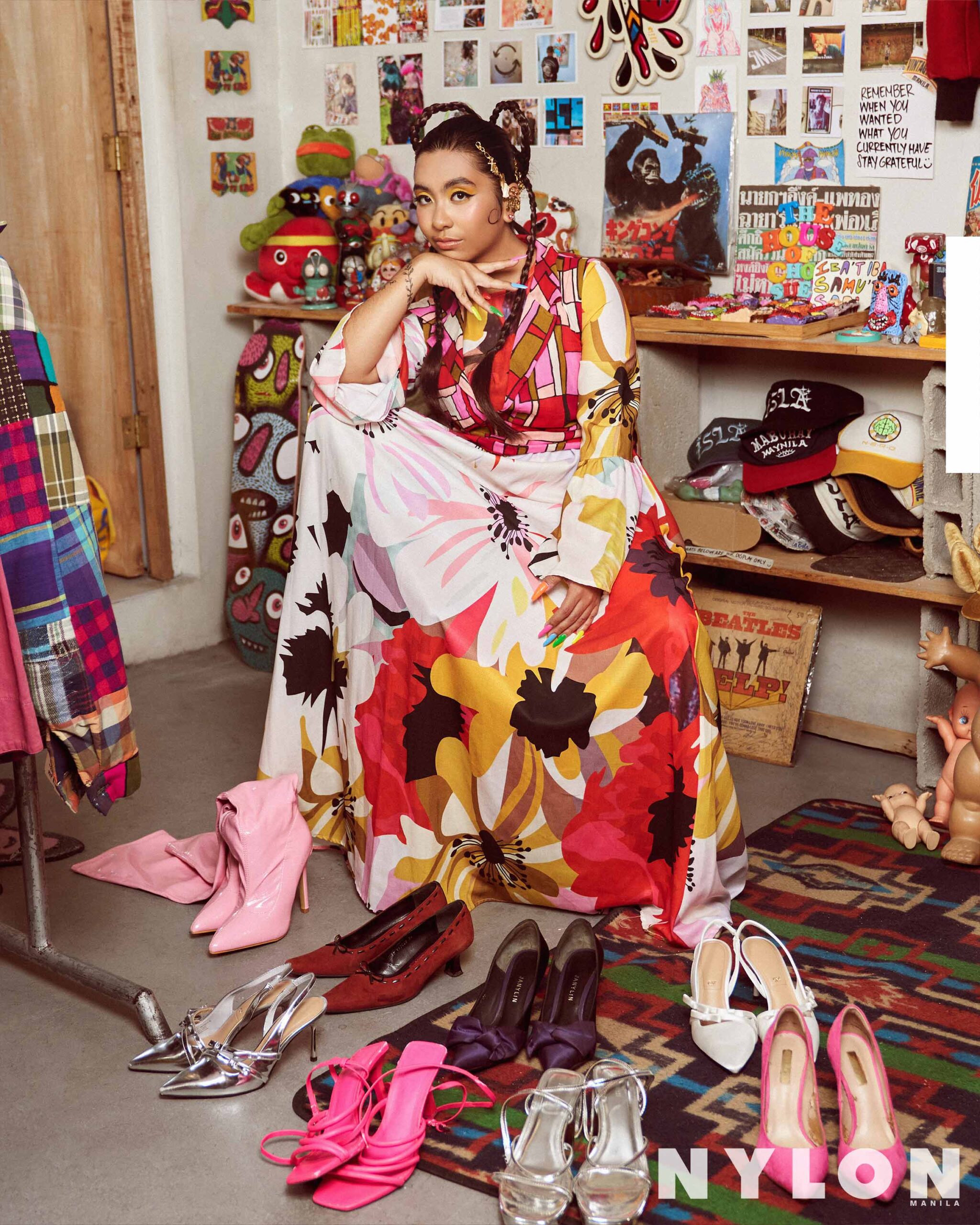
Shirt by @giveme_theloot, Dress by @nirvanacollective.co, Earrings by @preciouscharms.co, Hair accessories by @jewelnation.ph, Heels by @thelittle_vintageshop.
Although individual choice has a big impact in changing systems and practices in fashion, in the sense that people can demand accountability and influence others to partake in their advocacy, the burden can’t just fall on us as consumers. Governments, brands and businesses, and institutions have a responsibility to the Earth and its people, and part of that responsibility is prioritizing sustainability.
FASHIONING SUSTAINABLE GOALS
So what can they do? The members of YACAP echo demands made by advocates worldwide and over history: “Pay your workers!” “Make sure materials are sourced in an ethical way.”
“We live in a society,” Alab wryly shrugs, referring to the many issues within structures that have to be addressed and the changes that are yet to be realized. It’s difficult to truly enact change. It’s slow, painful, and costs a lot. They know this best, seeing firsthand how little truly changes even after numerous international climate conferences.
“But [businesses] shouldn’t just settle,” she continues. “They can promote the advocacies of the farmers, of the workers. Even if they’re a small business, they can be part of the voices clamoring for change.”
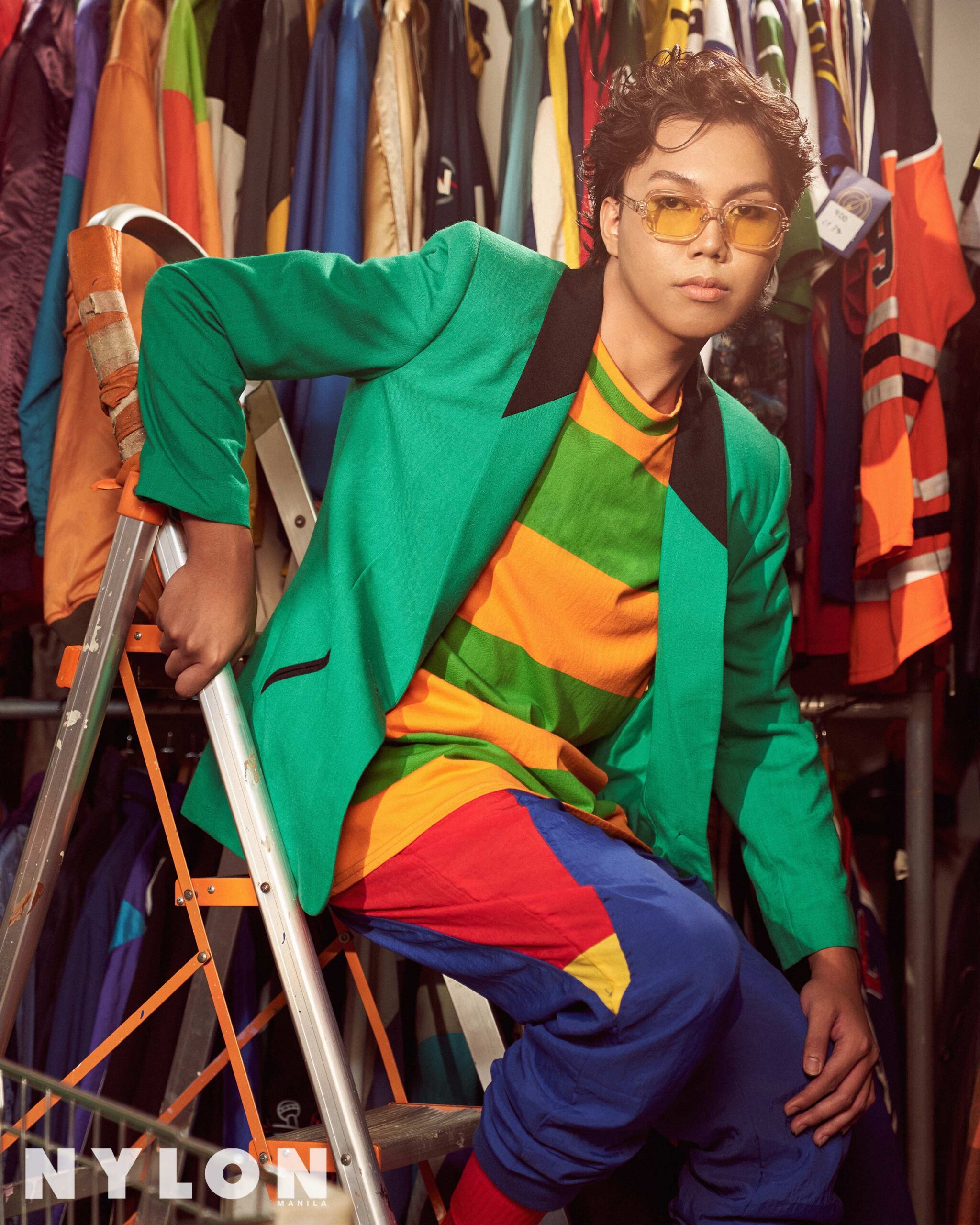
“May malaking impact din talaga ang education,” JC adds. Businesses can be shaped according to just and fair sustainability practices. “Kung papasok ka man sa industry, at least know and recognize how things can be impacted.”
Going back to trends and the-powers-that-be that shape collective consciousness, a lot of businesses, institutions, and systems make it seem like individual choices really can change the world just like that. But these young activists aren’t naïve—individual action can only go so far. A few people not shopping at a fast fashion brand won’t automatically and immediately change their business model or make the tons of garbage floating around the Pacific disappear just like that.
“That shifts the burden away from systems and bigger causes of problems as to why our production and consumption isn’t sustainable in the first place,” Mela notes.
They agree that people should recognize as to whom the bigger burden must fall when it comes to achieving sustainability in fashion, and climate action and mitigation for that matter, that we should call on those with far more powerful influence than us to be held accountable.
“Gen Z has a really big voice,” Alab says. “It’s a generation of change. They’re the ones looking for change in government, with elections—they’re looking for doable concrete steps.”
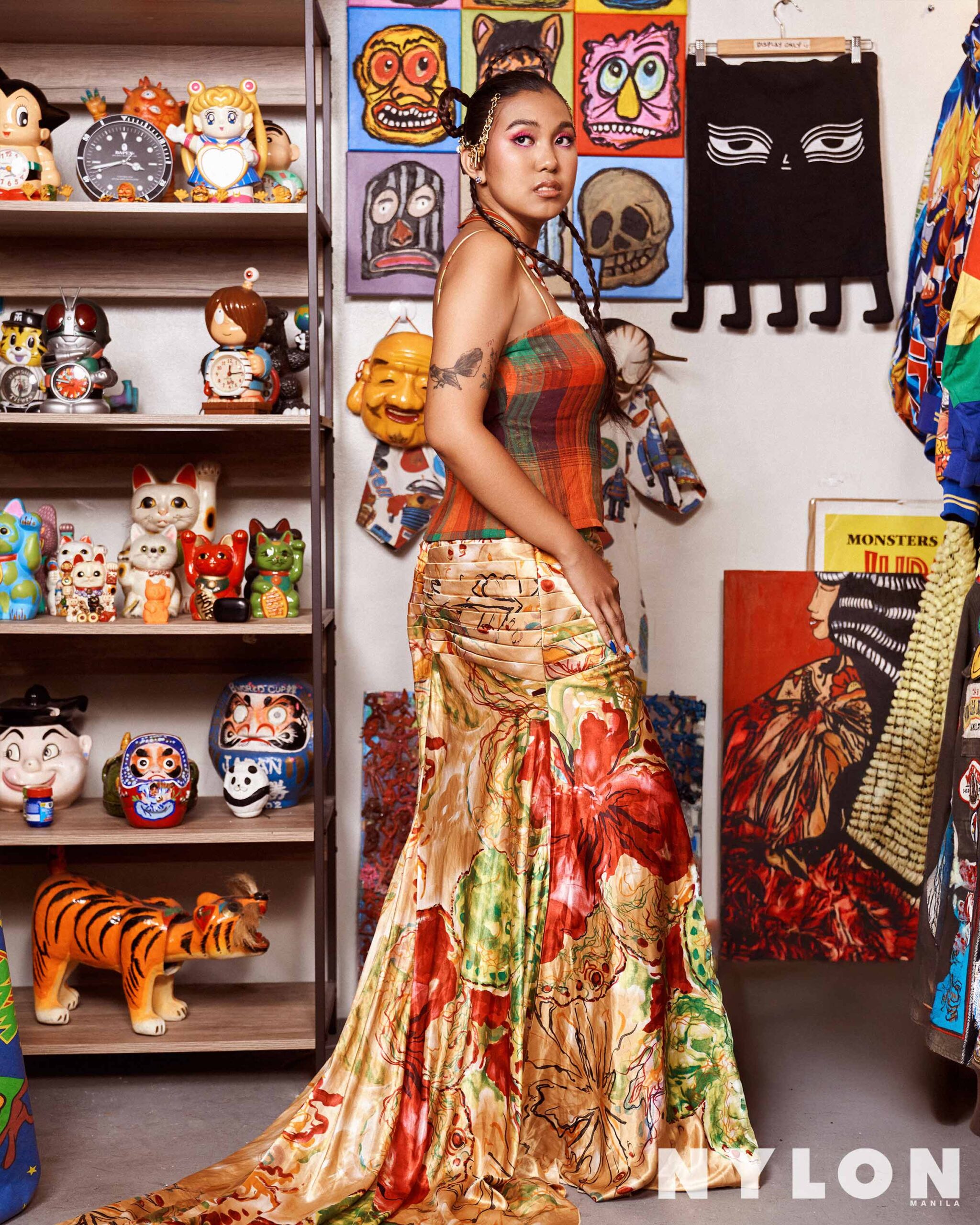
Top by @wearclassica, Dress by @pastlives___ph, Hair accessories by @jewelnation.ph, Earrings by @preciouscharms.co, @jewelnation.ph.
Being involved politically and in advocacy in relation to different aspects of life, like style and sustainable fashion, comes with being part of Generation Now, and it can be attributed to having far more sources of learning and connection than ever before. “[Gen Z] are willing to participate in more progressive practices, dahil hindi na kulong ang education sa paaralan lang,” JC says.
The youth of YACAP, and arguably the youth in general on the frontlines of climate activism, is taking on a bigger burden than they should, but it’s a choice every single one of them makes in the hopes of changing the world they live in.
They take on responsibility because they see the bigger picture. They choose to collectivize and engage with issues politically, economically, socially—maximizing every choice they make, down to what they’re wearing, to expose truths, call for action, and stand in solidarity for those most vulnerable. They’re speaking up in more ways than one, and they’re living their biggest, boldest, and bravest truths in style and out loud.
Photography by JHARWIN CASTAÑEDA
Creative and Fashion Direction by ANDRE CHANG
Art Direction by GELO QUIJENCIO
Styling by ANDRE CHANG
Fashion Associate KURT ABONAL
Makeup FIFI SANTELICES, ARLYN FEL, JAZMEEN ZAPANTA, and NIX SORIANO of NIX INSTITUTE OF BEAUTY
Hair Stylists JEAN ANGANANGAN, ARLYN FEL, and JESSEY MIRANDA of NIX INSTITUTE OF BEAUTY.
Nail Artist LUZ FORTUNO and JENNIFER PASCUAL of TRIPLE LUCK BROW & NAIL SALON
Production Associate JASMIN DASIGAN
Shot on location at SEASON PASS
Deputy Editor RAFAEL BAUTISTA
Sr. Brand Associate BIANCA LAO
Continue Reading: At Fashion Against Fascism & Fossil Fuels 2024, Advocates Called For Climate And Social Justice—In Style
